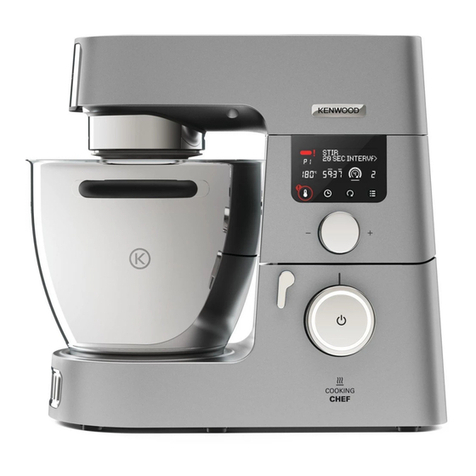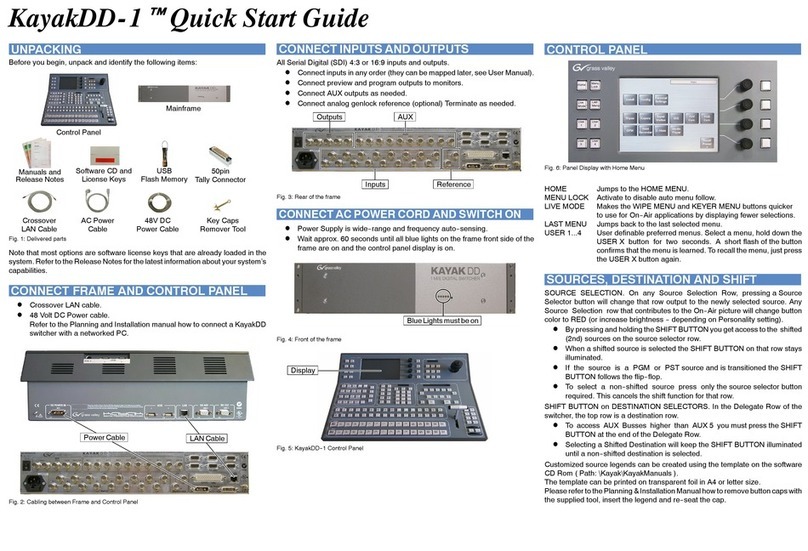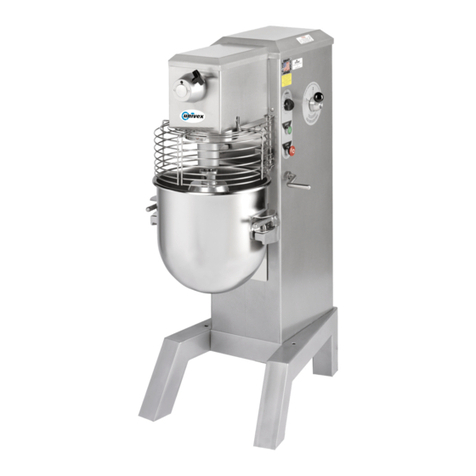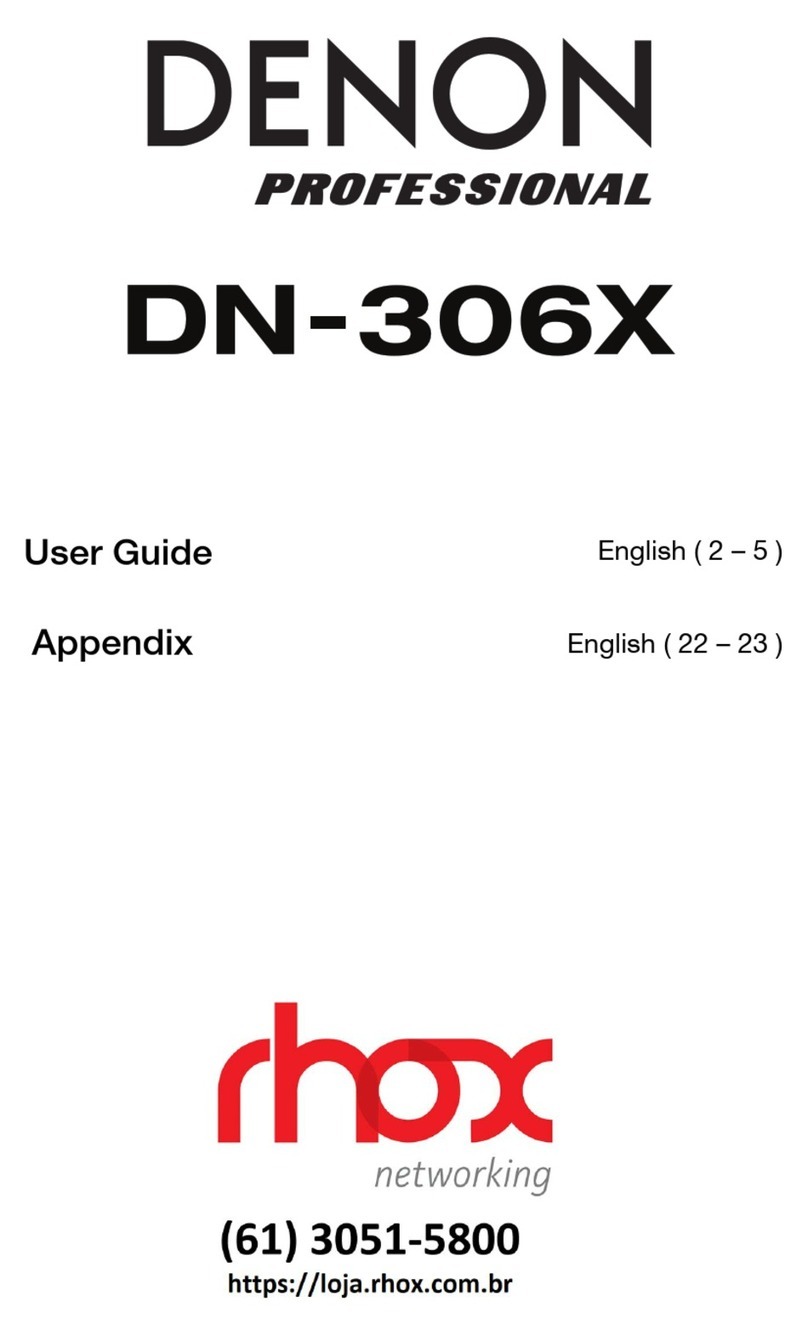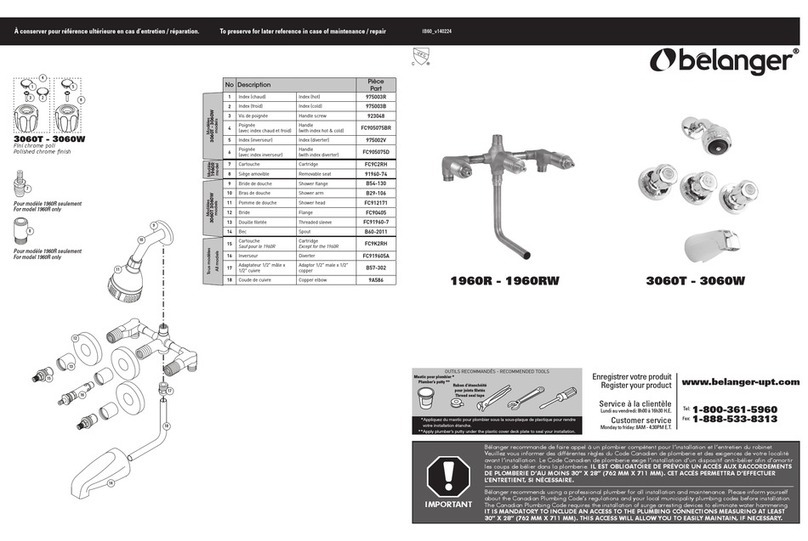seemix Seeport 4 User manual

Every effort has been made to supply complete and accurate information. However Seemix Sound AS assumes no
responsibility for the use of, nor for consequencial damages of the use of information and/or the instrumentation described
herein. Furthermore, Seemix Sound AS assumes no responsibilty for any infringement of the intellectual property rights of
third parties, wherever applicable, which would result from such use.
Seemix Sound AS reserves the right to amend any of the information given in this manual without further notice.
Seemix Sound AS
Åmotveien 2
P.O. Box 131
N-1380 Heggedal
Norway
Telephone: (+47) 66 77 12 80
Telefax: (+47) 66 77 12 81
E-mail: info@seemix.no
www.seemix.no
Seeport
4
User Manual
Date of revision: December 2001

3
Seeport
4
User Manual
CONTENTS
Contents
1. GENERAL INFORMATION ............................................................................4
2. MIXER LAYOUT............................................................................................. 5
3. MODULES......................................................................................................6
3.1 MIC/MONO LINE INPUT MODULE, I3809............................................................. 6
3.2 STEREO LINE INPUT MODULE, I3810................................................................. 8
3.3 TELEPHONE HYBRID MODULE, TH3802............................................................10
3.4 OUTPUT MODULE, U3811...................................................................................12
3.5 LIGHT OUTPUT MODULE, U3804........................................................................14
3.6 MONITOR MODULE, M3805.................................................................................16
3.7 TALKBACK / AUX MASTER MODULE, TK3803...................................................18
3.8 PRESENTER MONITOR FEED MODULE, M3808 ...............................................22
3.9 AC POWER SUPPLY MODULE, P3807...............................................................24
3.10 AC/DC POWER SUPPLY MODULE, P3806 .......................................................25
4. OPTIONS ....................................................................................................... 26
4.1 INSERT POINTS ON INPUTS, INS3800............................................................... 26
4.2 VU METER BRIDGE, VU3801............................................................................... 26
4.3 EXPANSION CABLE, EC3800 ...............................................................................26
4.4 TRANSPARENT DUST COVER, DC3808/12/16 ...................................................26
4.5 MODULE EXTENDER CARD, EX07......................................................................27
4.6 FLIGHT CASES, FC3808/12/16.............................................................................27
4.7 RACK MOUNTING BRACKETS, MB3800..............................................................27
5. TECHNICAL INFORMATION ....................................................................... 28
5.1 AUDIO BLOCK DIAGRAM.................................................................................28
5.2 REMOTE CONTROL / CUE LIGHT SYSTEM ...................................................29
5.3 LEVEL DIAGRAM ..............................................................................................30
5.4 EQUALIZING CURVES......................................................................................31
5.5 CONNECTOR INFORMATION..........................................................................32
5.6 BACK PANEL LAYOUT .....................................................................................34
5.7 DIMENSIONS AND WEIGHTS..........................................................................35
5.8 TECHNICAL DATA ............................................................................................36

4© Seemix Sound AS
1. GENERAL INFORMATION
1. General Information
This manual gives general functional and technical information on the Seeport
4
port-
able mixer, The mixer has 4 outputs. A separate manual is available for the Seeport
2,
which has 2 outputs.
Seeport has been designed with much thought to the user. With its modular design, it
offers versatility and an extensive range of functions, some which are not so typical
in small mixers, making it suitable for many types of applications. Typically these
include radio and television studio work, OB vans, film sound, location recording and
TV post production.
The ergonomic design and surface layout of Seeport has been much appraised over
the years, incorporating a high functional level into a compact, yet uncluttered user
surface.
Seeport is available in three frame sizes and with a range of different modules. Full
details of all modules are given in this manual.
Built to very high standards both mechanically and electronically, Seeport is robust
and extremely reliable in operation. All faders used are Penny & Giles long throw
(104 mm) conductive plastic. The frame mechanism provides a neat suitcase type
carrying solution. Weight has also been taken into consideration in the design, a 7/4
weighing approximately 9.5kg.
Various options are available for Seeport. These are covered in section 4.
Further technical information is provided in the Seeport Service Documentation. This
is provided with each Seeport delivery or is available from Seemix Sound on request.

5
Seeport
4
User Manual
2. MIXER LAYOUT
2. Mixer Layout
The following drawing is an example of an 7 channel configuration. The 4-output version is
available in three frame sizes, housing 7, 11 or 15 input modules.
S
E
E
P
O
R
T

6© Seemix Sound AS
3.1 Mic/Mono Line Input Module, I3809
3. MODULES
GAIN
+/-20 dB fine gain adjustment on mic and line inputs.
PHANTOM ON/OFF
Switch for selecting 48 V phantom power.
PHASE(X/=)
Phase reversal switch.
MIC GAIN
10-50 dB gain on mic input.
HP
High pass filter, 12 dB/octave. 80 Hz and 140 Hz cut off frequencies.
MIC / LINE
Mic/Line input selector. (Separate XLR-type connectors).
LOW
Parametric equalizer low end. +/-12 dB, 50 Hz to 1kHz peak/dip.
Q=1.3 at max peak/dip.
HIGH
Parametric equalizer high end, +/-12 dB, 600 Hz to 10 kHz
peak/dip. Q=1.3 at max peak/dip.
AUX 1-4
Aux output pre/post selectors and level pots. AUX 1 and AUX 2 have
center off switches and no pots.
PAN
Pan potentiometer for panning signal between A and B, plus C and D
outputs.
PAN OFF
Deactivates pan pot. Signal is sent equally to all 4 outputs.
S/N SWITCH
With this switch in the S position, a phase reversal of the signal is
sent to outputs B and D. This provides therefore the ’S’ signal of an
MS configuration on both A/B and C/D outputs. The ’M’ signal would
be fed from a separate mic channel (in N, normal position). In this
way, two faders can be used for controlling an MS signal. Note: The
pan pot must be set centred for both channels when used in MS con-
figuration.
PEAK
Overload LED.
A, B, C, D
Switches for routing channel to respective output(s). Affects stereo
outputs only, leaving AUX and PFL active.
ON AIR LED
This is lit when the fader is open and any one or more of the A, B, C
or D switches are depressed.
PFL
Pre-fade listen, with LED. Jumper settings determine whether PFL is
cut when channel is On Air, or is independent of On Air status. Other
jumper settings determine whether PFL monitoring as automatically

7
Seeport
4
User Manual
3. MODULES
I3809 MODULE AUDIO BLOCK DIAGRAM
Module Information
Jumper settings
SIGNALISATION.
When the fader is open, and any of the A, B, C or D-switches are on, the
fader start relay for the channel will be closed when the channel is in LINE
position. In MIC position, the CUE1 or CUE2 signalling bus may be fed
(jumper dependent).
JUMPER SETTINGS.
The following jumper settings are available for the module.
• INSERT option
• CUE1 or CUE2 or no CUE when on air.
• PFL control - activating channel PFL button overrides monitor selec-
tion and activates PFL monitoring. (Cue 2 and PFL Ctrl cannot be
used simultaneously.)
• PFL muted by ON AIR, or PFL independent of ON AIR
The positions of these jumpers are indicated in the diagram below.

8© Seemix Sound AS
GAIN
+/-20 dB fine gain adjustment.
X/=
In ’X’ position, phase reverses left input channel.
HIGH PASS
High pass filter, 12 dB/octave. 140 Hz cut off frequency.
MONO L/R
When both switches are in the right position (as shown) the
channel is stereo. When the L position is used, the left input
signal is sent to both A/B and C/D channels. When the R
position is used the right input signal is sent to both A/B and
C/D channels. If both switches are used, both left and right
inputs are sent to both A/B and C/D channels.
LOW
Shelving filter low end, +/-12 dB.
HIGH
Shelving filter high end, +/-12 dB.
MS DEC
Switches an MS decoder into the channel. With switch in the
MS DEC position, a signal recorded in MS format can be
decoded through the channel to give stereo at the A/B and
C/D outputs. The ’M’ signal uses the left input connector, the
’S’ signal the right.
AUX 1-4
AUX output pre-post selectors and level pots. AUX 1 and
AUX 2 have center off switches and no pots.
AUX send signal can be either mono (sum of left and right
input channels) or stereo (left goes to Auxes 1 and 3, right to
Auxes 2 and 4). This choice is jumper selectable.
BAL
Stereo balance potentiometer. Adjusts balance between A
and B, plus C and D outputs.
PEAK
Overload LED.
A/B, C/D
Switches for routing channel to respective outputs. Affects
stereo output only, leaving AUX and PFL active.
ON AIR LED
This is lit when the fader is open and either or both of the A/B
or C/D switches are depressed.
PFL
Stereo pre-fade listen, with LED. Jumper settings determine
whether PFL is cut when channel is On Air, or is independent
of On Air status. Other jumper settings determine whether
PFL monitoring as automatically activated when button is
depressed.
3.2 Stereo Line Input Module, I3810
3. MODULES

9
Seeport
4
User Manual
Module Information
SIGNALLING.
When the fader is open and either of the A/B or C/D-switches are on, the
fader start relay for the channel will be closed.
JUMPER SETTINGS.
The following jumper settings are available for the module.
• INSERT option
• AUX sends mono or stereo
• PFL muted by ON AIR or PFL independent of ON AIR
• PFL control - activating channel PFL button overrides monitor selec-
tion and activates PFL monitoring
The positions of these jumpers are indicated in the diagram below.
Jumper settings
I3810 MODULE AUDIO BLOCK DIAGRAM
3. MODULES

10 © Seemix Sound AS
3.3 Telephone Hybrid Module TH3802
3. MODULES
GAIN
+/-20 dB fine gain adjustment
EQ
Equalizer +/-12 dB, 150 Hz to 4,8 kHz peak/dip.
AUX 1-4
Aux output pre-post selectors and level pots. AUX 1/2 has a center
off switch and no pot. The post fade point is before the A, B, C and
D switches.
SEND LEVEL
Level potentiometer for return signal to incoming caller. The LE-
VEL LED indicates that the SEND level limiter is active.
SEND BUTTONS
Interlocking switches for selecting return signal to caller. Caller
may be sent either AUX1 or AUX2 signals (jumper selectable), or
an external signal (EXT) connected at the back of the module.
”SET” OFF
”SET” OFF LED indicates that the telephone set is disconnected.
This is activated by the CONNECT button or by CUE1 or CUE2
(jumper selectable). CUE1 or CUE2 may be activated by any other
channel when on air (eg. For red light). This therefore avoids ring-
ing interuption when for example a local mic is live.
CONNECT
This button activates the hybrid function itself and connects the
line to the channel. It also disconnects the telephone set (100ms
after making the channel connection) as mentioned above. Relea-
sing the connect button breaks the connection to the mixer chan-
nel and re-connects the telephone set (again after 100ms) to
enable off air conversation. NB: The set will only be re-connected
when the relevant CUE signal is not present, e.g. local mic which
controls red light is off air.
CALL
The call LED gives a visual indication of the presence of an
incoming call. This is useful when ringing has been deactivated by
one of the cue busses when on air.
PAN
Pan potentiometer for panning signal between A and B, plus C and
D outputs.
PAN OFF
Deactivates pan pot. Signal is sent equally to all 4 outputs.
A, B, C, D
Routes signal to A, B, C and D mix busses.
ON AIR LED
This is lit when the fader is open and any one or several of the A,
B, C or D switches are depressed.
PFL
Pre-fade listen, with LED. Jumper settings determine whether PFL
is cut when channel is On Air, or is independent of On Air status.
The drawing in the upper left corner of the module shows the
connections on the back panel.

11
Seeport
4
User Manual
Module Information
3. MODULES
TH3802 MODULE AUDIO BLOCK DIAGRAM
The TH3802 can be used in several different ways, either as a straight hybrid (without interacting with the rest
of the mixer) or as an integrated mixer channel with routing to and from the mix busses.
The incoming line signal can be routed to A, B, C and D master busses. It can also be sent to the PFL bus as
well as to all AUX busses either pre or post fade. However, the channel can only be sent to either AUX1 or
AUX2, not both. This choice is jumper selectable. The reason for this is that AUX1 or AUX2 can also be se-
lected as the return signal to the caller (SEND) (also jumper selectable). These jumpers must therefore be set
differently for the two signal paths in order to avoid a feedback loop. Further, if two hybrid modules are used
simultaneously, by setting these jumpers in ’mirrored’ positions for each module, AUX1 and AUX2 can be
used for cleanfeed mixes (N-1) for respectively line 1 and line 2.
The return signal (SEND) can be selected from either AUX1/2 (as described above) or an external source.
The module also has a channel out connector. This is fed from the post fade signal and provides an extra
output independent of the rest of the mixer. This enables the module to be used as a stand alone hybrid. For
example, the Channel Out is sent to an external mixer, and the output of this mixer is in turn connected to the
EXT input of the hybrid to provide the SEND signal to the caller. Or, if the A+B or C+D output of the mixer is
fed to the EXT input, the line can then be used for transmission of the mixer’s main output. Any source con-
nected to the EXT input can be sent down the line for monitoring (SEND EXT). Similarly, any incoming te-
lephone line signal can be monitored directly from the channel output connector.
JUMPER SETTINGS.
The following jumper possibilities are available. Jumpers positions are indicated in the diagram below.
•CUE1 or CUE2 signals can mute ringing from telephone set to avoid interruptions when on air
•PFL muted by ON AIR, or PFL independent of ON AIR
•STF (Norwegian standard), or 600 Ohm LINE IMPEDANCE
•LinemixedtoAUX1orAUX2
•AUX1 or AUX2 to SEND programme (cleanfeed mix to caller)
Jumper settings

12 © Seemix Sound AS
STEREO PPM
Peak Programme Meter fitted with 16 LEDs.
Nordic scale: 0 dB on meter = 0 dBu output
LIMITERS
Selects stereo limiter in or out.
STEREO/SEP
Selects between stereo ganged limiters or separate
for each channel.
RETURN
Return level pots for A and B return inputs.
3.4 Output modules, U3811
3. MODULES
AB CD
In the 4-output version, two U3811 output modules are used, labelled respectively A-B
and C-D. Outputs A and B may be routed to respectively C and D, enabling A and B to
be used as subgroups. Switches for this are located on the TK3803 module.

13
Seeport
4
User Manual
Module Information
U3811 MODULE AUDIO BLOCK DIAGRAM
Jumper settings
SIGNALLING.
When one or both faders are open, the fader start relay for the output
channels will be closed.
JUMPER SETTINGS.
This module is also used in the 2-output version of Seeport. Jumpers
must be set accordingly.as indicated in the drawing below.
3. MODULES

14 © Seemix Sound AS
The U3804 is a stripped down version of the U3811
main output module, for use where no controls are
required. It has no faders, limiters, PPMs or return
inputs.
Two modules are used in the 4-ouptut configuration
3.5 Light Output Modules, U3804
3. MODULES
U3804 Module Audio Block Diagram
C
D

15
Seeport
4
User Manual
3. MODULES
THIS PAGE IS INTENTIONALLY LEFT BLANK

16 © Seemix Sound AS
STEREO PPM
Peak Programme Meter fitted with 16 LEDs.
Nordic scale: 0 dB on meter = 0 dBu output.
MONITOR SELECTOR SWITCHES
Separate monitor select switches for left and right channels give an increased
flexibility to the monitoring:
A, B, C, D route main outputs to left and/or right monitor outputs.
AUX1,2,3,4route aux outputs to left and/or right monitor ouputs.
C+D routes mono sum of C and D outputs to left monitor output.
Alternate jumper selectable functions possible (see jumper settings).
PFL routes mono PFL sum to right monitor ouput. Alternative functions are
possible dependent on jumper settings (see next page).
EXT L, R route signal from external stereo monitor input (2 XLRs on back
panel) or from optional Y3802 module, to left and/or right monitoring outputs
(jumper selectable).
See section 3.8 for details of Y3802 module.
PHONES 1
Level control for the Phones 1 headphone output. The phones 1 output always
follows the monitor selection.
PHONES 2
Level control for the Phones 2 headphone output. The left and right channels of
the phones 2 ouput can be individually set (by jumper) to any one of the follo-
wing possibilities:
PHONES 2 LEFT follows either the selected left monitoring output, output A,
PFL left, or AUX 3 output.
PHONES 2 RIGHT follows either the selected right monitoring output, output
B, PFL right, or AUX 4 output.
PFL
Potentiometer for adjusting level of PFL mono output. Also an LED to indicate
that PFL control is active (jumper dependent - see explanation of PFL control on
opposite page).
X
Left-right reverses the monitoring signal.
MS DEC
Switches an MS decoder into the monitoring chain. This enables A/B monitoring
of an MS coded signal, fed either from the mix buses (an MS mic on two input
channels, ’M’ routed to A and ’S’ routed to B), or from the external monitoring
inputs. The ’M’ signal uses the left input connector, the ’S’ signal the right.
∑
Sends mono sum of both monitoring channels to both outputs.
BAL
Potentiometer for adjusting L/R balance of the stereo monitor output.
MONITOR
3.6 Monitor Module, M3805
3. MODULES

17
Seeport
4
User Manual
Module Information
M3805 MODULE AUDIO BLOCK DIAGRAM
3. MODULES
JUMPER SETTINGS.
The following jumper possibilities are available:
• External L/R meter outputs (eg. VU meter bridge or flying leads from motherboard) can be PRE
or POST balance potentiometer
• 3 possibilities for monitor mute/dim: Cue 1 mutes the PFL output, Cue 1 mutes the main moni-
tor output, or any depressed talkback button dims both PFL and monitor outputs.
• PFL control active or deactive. This must be set consistently with PFL control jumpers on input
modules (I3809 and I3810).
• Phones 2 output set to follow either monitor selection, A / B outputs, PFL left / right outputs, or
AUX 3 /AUX 4 outputs. Individual settings for L and R channels.
• EXT L-R switches (lowest monitor select switch): selects external monitoring source from either
ext. inputs on back panel or from optional Y3802 module (in 11 and 15 channel frameworks
only). Individual settings for L and R channels.
• C+D switch (next lowest monitor select switch, left side): can be set to monitor either PFL left,
C+D, or left ext. monitoring signal from Y3802 module.
• PFL switch (next lowest monitor select switch, right side): can be set to monitor either PFL right,
PFL mono, or right ext. monitoring signal from Y3802 module.
The positions of these jumpers are indicated in the diagram below.
Jumper settings

18 © Seemix Sound AS
TB MIC
An external talkback mic can be connected here. When in-
serted, the in-built talkback mic. is disconnected.
GAIN
TB mic amplifier gain adjustment.
AUX 1-4
AUX master output level potentiometers.
A
►
CandB
►
D
When depressed, these switches route output A to the output
C mix bus and output B to the output D mix bus. This
effectively enables outputs A and B to be used as
subgroups.
TB RET
Talkback return level potentiometer. The talkback return sig-
nal is sent to both L and R PFL buses.
TALKBACK BUTTONS
Non-latching talkback pushbuttons. Routes TB signal or
oscillator to respective output(s).
OSC / MIC
Talkback circuits can be fed either from the talkback mic or
from the built-in oscillator.
OSC 1k, 60, 12k
Oscillator frequency selector. 60Hz, 1kHz or 12kHz.
OSC +6, 0dBu
Oscillator level selector. 0 or +6dBu.
OSCONOFF
Switches oscillator on or off.
3.7 Talkback / AUX Master Module TK3803
3. MODULES

19
Seeport
4
User Manual
Module Information
MONITOR DIM
By setting a jumper located on the M3805 monitor module appropriately,
any of the talkback butoons, when depressed, can be made to dim the
main monitoring and pfl mono outputs.
OUTPUT AMPLIFIERS
Output amplifiers for auxiliary and main outputs are located on the
TK3803 module.
3. MODULES
TK3803 MODULE AUDIO BLOCK DIAGRAM

20 © Seemix Sound AS
PHONES (2)
Headphones jack connector. Headphones inserted here mo-
nitor a parallel signal of the phones 2 output on the front of
the mixer, i.e. it provides a second phones 2 output. Level is
controlled from the phones 2 level control on the M3805 mo-
nitor module.
MON SOURCES TO EXT
Five external stereo sources, connected via a 25-pin D-sub
connector on back panel, can be summed and monitored
when the EXT monitor buttons on the M3805 module are
selected.
COMPATIBILITY METER
Meter for indicating phase content/correlation in the stereo
output signal. Follows the selected monitoring source.
LOUDSPEAKER
Monitors the mono summed PFL signal.
3.8 Ext. Monitor, PFL & Phase Meter Module, Y3802
3. MODULES
Table of contents
Popular Mixer manuals by other brands
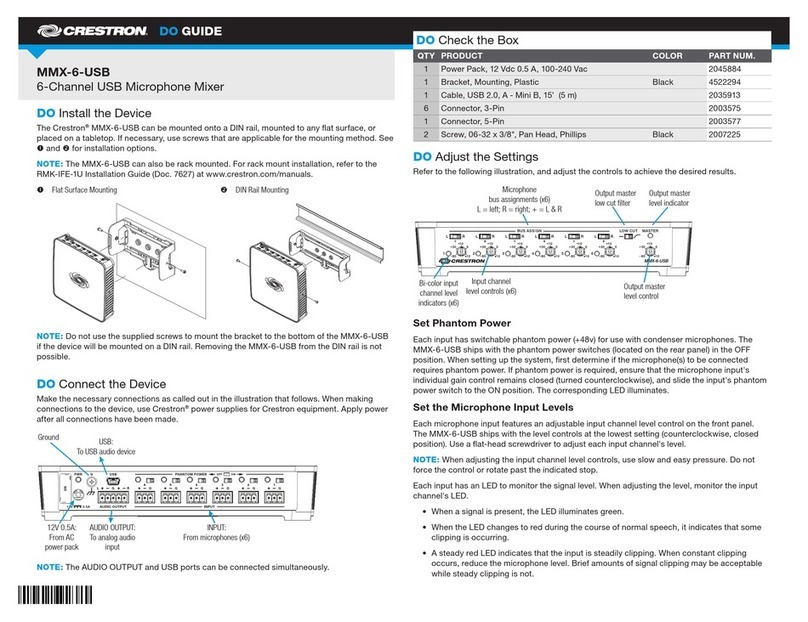
Crestron
Crestron MMX-6-USB Do guide
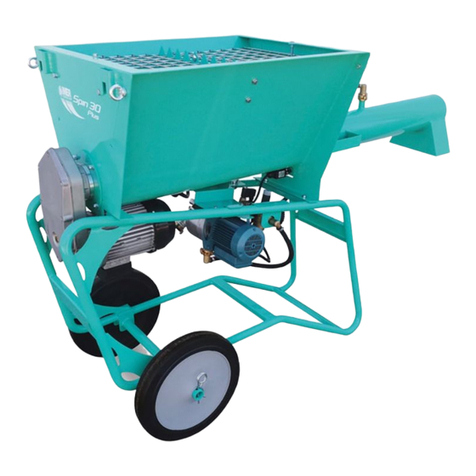
Imer Group
Imer Group SPIN 30 PLUS Operating, maintenance, spare parts manual
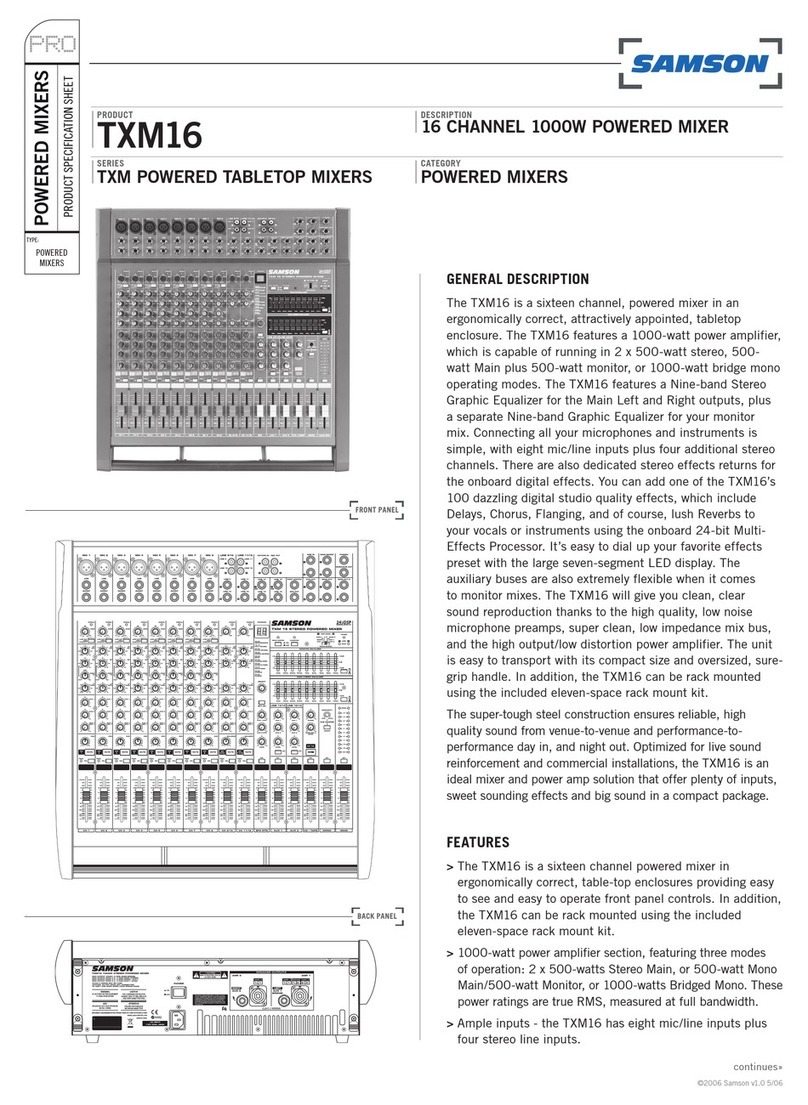
Samson
Samson Txm16 Product specification sheet
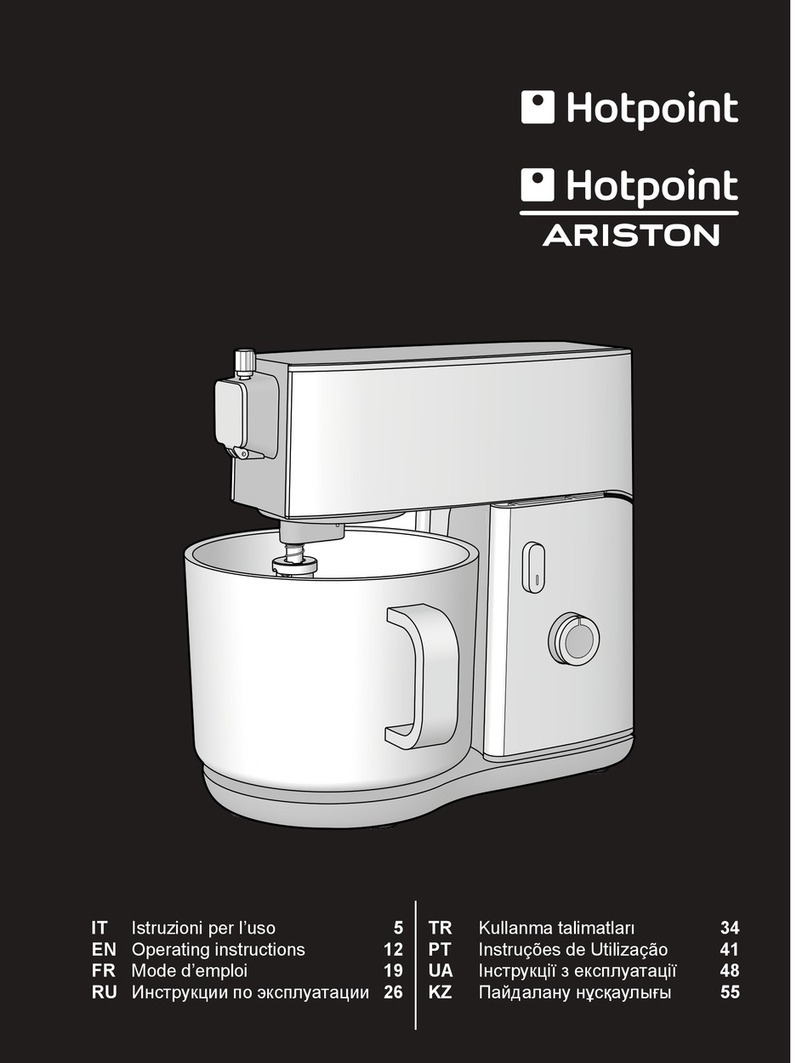
Hotpoint Ariston
Hotpoint Ariston KM 040 EU operating instructions

LEM
LEM SWING12 owner's manual

MULTIQUIP
MULTIQUIP WM63H5 Operation and parts manual

